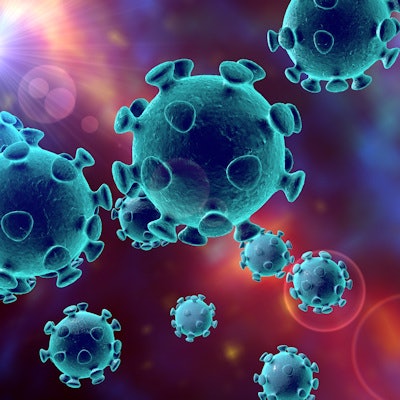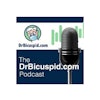
COVID-19 may cause patients to produce excessive saliva, resulting in angular cheilitis (AC), a painful inflammation of the corners of the mouth, according to a letter published on October 11 in Oral Diseases.
Dentists should take notice of patients who have inflammation around the mouth because it may be an indicator of SARS-CoV-2 infection, the authors wrote.
"AC of COVID-19 patients can be attributed to numerous local irritants, including hypersalivation," wrote the group, led by Dr. Abanoub Riad, PhD, of the Czech National Centre for Evidence-Based Healthcare and Knowledge Translation at Masaryk University.
Constantly learning
As scientists continue to study SARS-CoV-2 and COVID-19, they've come to understand more about signs and symptoms of the disease. In July, research revealed that a mouth rash could be a new sign of a SARS-CoV-2 infection. Approximately 12 days after other virus symptoms began, mucocutaneous lesions appeared in patients. In September, another study determined that dry mouth, loss of taste, and olfactory dysfunction may be the only or first symptoms of COVID-19.
Meanwhile, in another study, patients who had mild or no upper respiratory symptoms developed tongue ulcers within a few days of testing positive for SARS-CoV-2.
More than a dozen patients
The current analysis included 17 COVID-19-positive patients with AC who were seen between April and June 2020. The patients sought medical attention after experiencing pain in one or both of the downturned lines at the corners of their mouths. Riad and colleagues wrote about these cases after seeing research in which two patients with COVID-19 experienced AC.
The patients had a mean age of 40, and more than 70% were women. They had differing COVID-19-related symptoms; some had pharyngitis and others experienced taste dysfunction, but about 24% of the patients had a persistent fever. All patients did experience hypersalivation in the days preceding their exams, according to the authors.
Reddish swollen patches corresponding to AC were found unilaterally on the left commissure in about 65% of patients and only on the right mouth corner area in about 24%. Approximately 12% of patients had the inflammation on both sides of the mouth.
The researchers estimated the onset of AC using the day that patients received polymerase chain reaction (PCR) testing as a reference point. The mean onset was 1.8 days, and the mean duration was 3.35 days. Approximately 30% of patients had generalized cheilitis, as well as the angular form. On a scale of 0 to 10, the mean pain severity was a 5, and the pain lasted between two and five days. The condition resolved itself after treatment, which included mouthwash of chlorhexidine gluconate 0.3% and antifungal ointment, they wrote.
The why
Because most patients didn't show signs of teeth grinding or dental attrition and had first molars in occlusion, the investigators ruled out the possibility of decreased vertical dimension causing patients to develop AC. The increased expression of angiotensin‐converting enzyme 2 (ACE2) in salivary glands can lead to conditions such as acute parotitis, which can affect salivary consistency. However, there isn't enough evidence on salivary consistency and flow in COVID-19 patients, according to the authors.
More research is needed to investigate the potential predisposing factors for AC emergence in COVID-19 patients, the authors wrote.
"The increased salivation reported by our patients might cause AC as the salivary enzymes can irritate the skin of the mouth corners," they wrote.




















